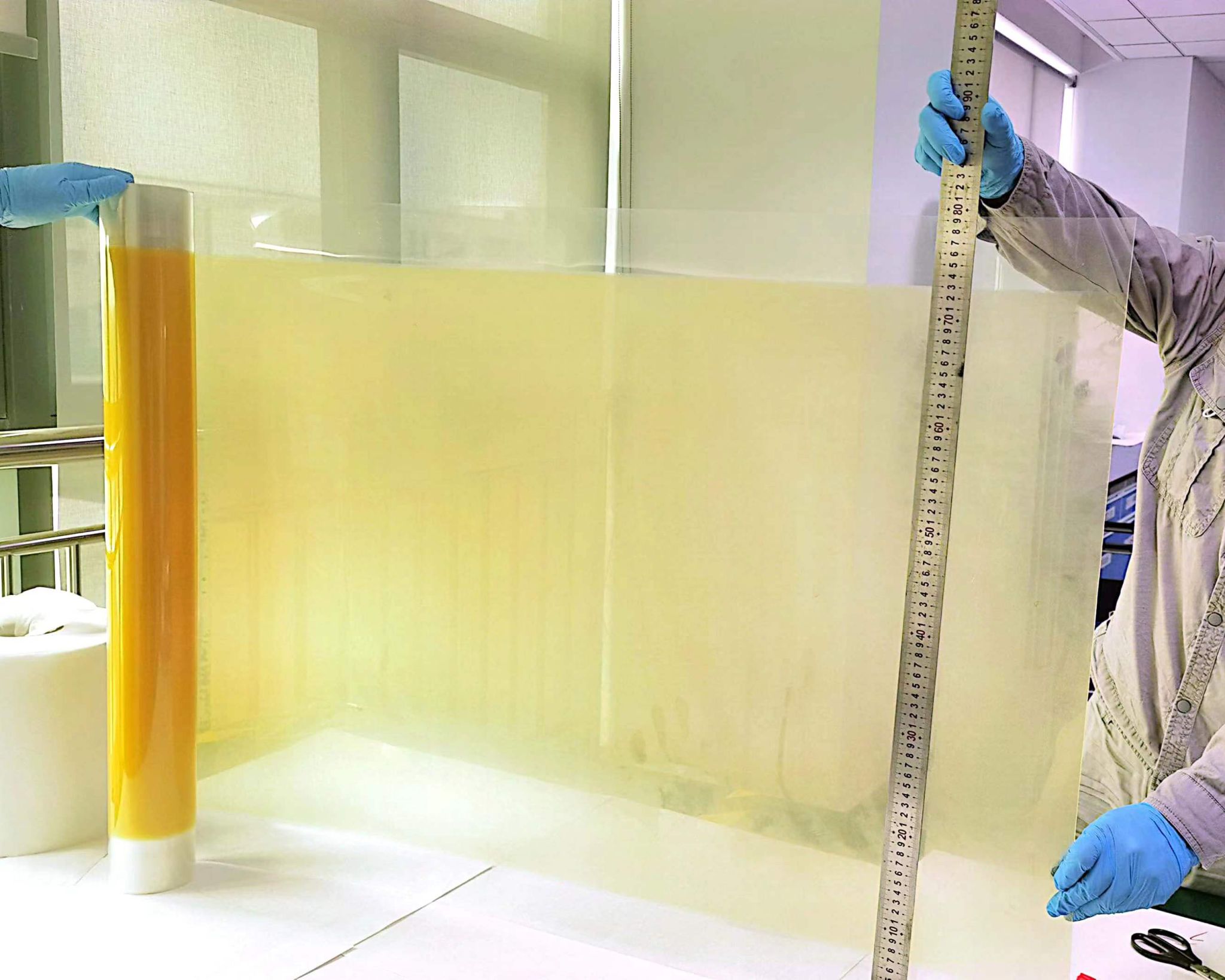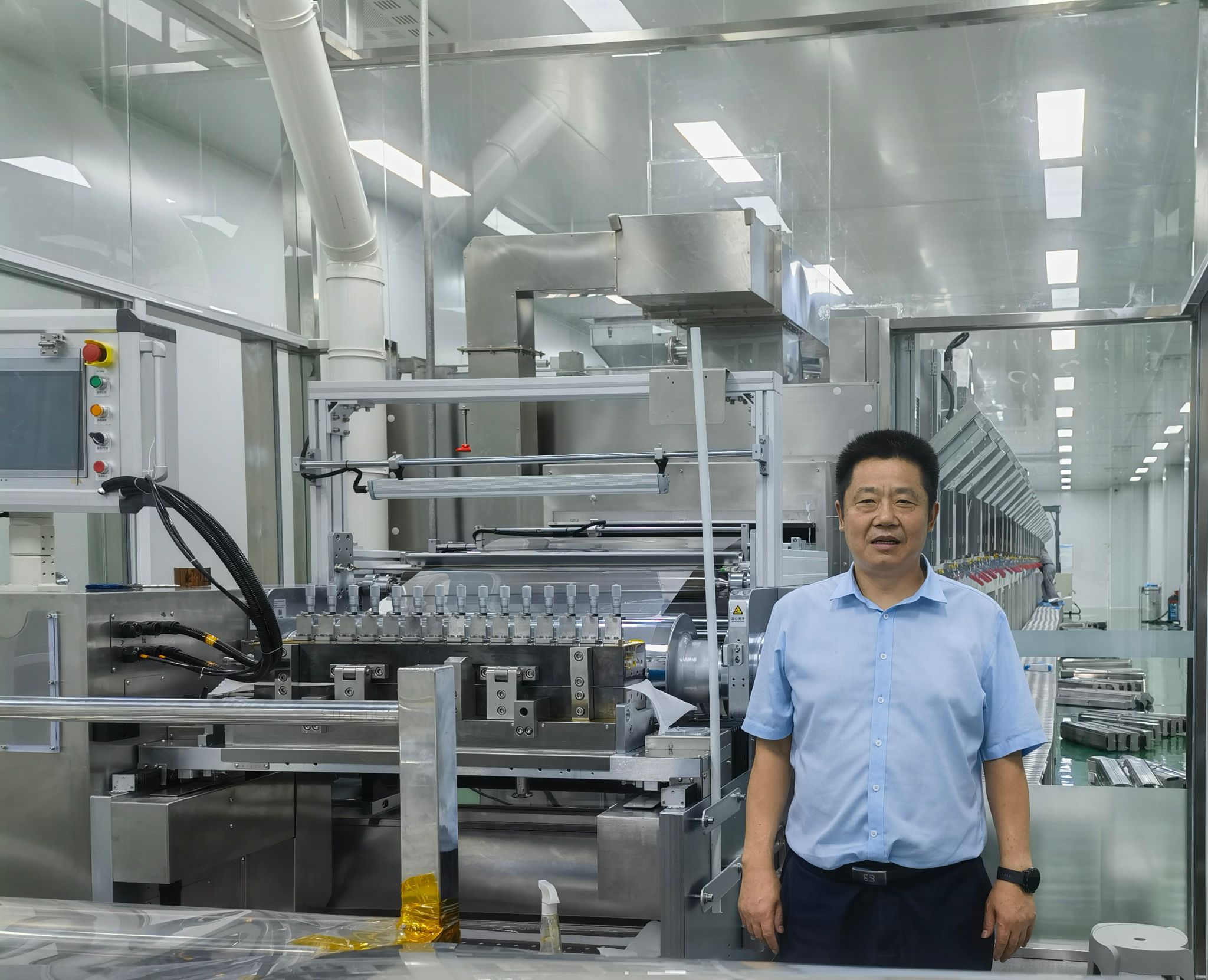A molecular membrane that allows select ions to cross with almost no friction could significantly boost the performance of flow batteries, fuel cells, and other devices critical to the world’s transition to clean energy.
“Ion exchange membranes play an increasingly important role in many new energy technologies,” explains Tongwen Xu, a professor in chemical engineering at the University of Science and Technology of China in Hefei, and one of the corresponding authors of a paper on this new finding, recently published in Nature1.

Ion-exchange membrane (in yellow) developed by Xu’s lab at the University of Science and Technology of China in Hefei, may improve the efficiency of renewable energy storage devices. Credit: University of Science and Technology of China
Electrochemical devices — including many batteries and electrolysers used to convert renewable electricity into fuels such as green hydrogen — typically feature a pair of electrodes separated by a selective ion exchange membrane.
These membranes feature narrow ‘pores’, designed to allow the passage of select small ions that counterbalance the flow of electrons. At the same time, the pores must prevent the passage of larger ions, which would cause short circuits and rapid performance degradation of the devices.
Improving performance
However, conventional ion exchange membranes have limited performance, because their flexible polymer backbones may compromise the balance between ion permeation rate and membrane selectivity,” explains Xu.
The polymer’s flexible nature means that the pores vary in diameter, so it’s challenging to effectively exclude the passage of ions of specific sizes, while also allowing small ions to rapidly cross the membrane. The flexible polymer chains are also in constant motion, increasing the chance of collisions between the ions and the pore walls, which poses an additional barrier to ion passage and results in high membrane resistance.
“In most electrochemical devices the membrane contributes a major proportion of the whole-cell resistance, resulting in low efficiency and high cost,” Xu says.
To solve the problem of variable pore size, Xu and his team developed semi-rigid polymer membranes that were much less flexible in 2016. The proven membrane performance resulted in more effective energy storage devices, but the slight flexibility still had a constricting effect on pore size and slowed the flow of small ions.
“To pursue ion transport rates across ion exchange membranes to the limit, we decided to remove this last stumbling stone,” Xu says.
The team’s latest membrane, detailed in the new paper, eliminates the last bit of unwanted flexibility. To achieve this, it employs polymer frameworks with rigid backbones based on triazines, which are a class of nitrogen-containing, ring-shaped organic compounds.
The team also lined the pores with functional groups designed to facilitate rapid passage of small ions.
“The resultant membrane pore allows extremely fast ion transport,” says Xu, who adds that sodium ions cross the membrane so fast it is almost as if the membrane isn’t there. The performance of many electrochemical devices could benefit.

Tongwen Xu of the University of Science and Technology of China in Hefei at the pilot production line for membranes for next-generation, high-performance energy storage devices. Credit: University of Science and Technology of China
Rigid ion channel
“Our findings, and the knowledge we have gained, may promote the commercial production of superior ion exchange membranes,” Xu says. His team is now collaborating with a Chinese company, Suqian Times Energy Storage Technology, on a pilot-scale production project.
Back in the lab, the team’s immediate objective is to create rigid polymer membranes that are even easier to manufacture. In the long term, they hope to improve membranes further by taking inspiration from nature.
“Our ultimate goal is to mimic the function of ion channels in living organisms,” Xu says. “This is not an easy task, as it requires perfectly aligned ion channels with precise pore geometry.” But in the hope of better energy storage devices and a greener future, it will be worth the effort.
Reference:
Zuo, P., Ye, C., Jiao, Z. et al. Nature 617, 299–305 (2023). https://doi.org/10.1038/s41586-023-05888-x